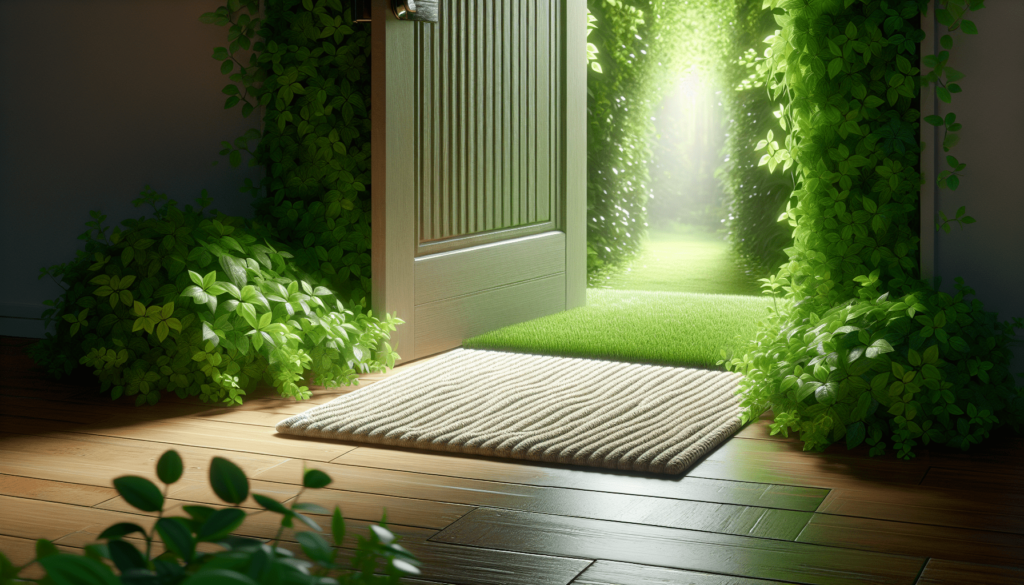Have you ever entered your home and wondered why your allergies flare up as soon as you step inside? It might be time to consider the role your entryway plays in welcoming allergens into your safe haven. While often overlooked, entryways can be a breeding ground for allergens, which can easily spread into your living areas.
Creating a healthier home environment starts with minimizing these allergens at the door. With some strategic planning and a few practical tips, you can significantly reduce the allergens in your entryway, setting the stage for a cleaner, more comfortable living space.

Understanding Common Entryway Allergens
Your entryway is the first line of defense against allergens. By understanding what these allergens are and how they enter your home, you can take proactive steps to minimize their impact.
Common Allergens Found in Entryways
Many allergens found in entryways come from outside your home. Here are the most common:
- Pollen: Carried in from shoes, clothes, and the air.
- Dust: Accumulates from foot traffic and outdoor particles.
- Pet Dander: Brought in by pets or through clothing.
- Mold Spores: Thrive in damp environments frequently found near entryways.
How Allergens Make Their Way Inside
Allergens enter your home primarily through open doors and windows, on the bodies and clothes of your family and visitors, and even through air vents. Once inside, they can easily spread throughout your house if not contained or managed at the entryway.
Designing an Entryway to Reduce Allergens
A thoughtfully designed entryway can significantly impact allergen levels in your home. Here’s how you can tweak your space to keep allergens at bay.
Choosing the Right Flooring
The type of flooring in your entryway can influence how easily allergens are trapped and cleaned.
- Hardwood: Easy to clean and doesn’t trap allergens.
- Tile: Durable and simple to wipe down.
- Avoid carpeting: Carpets can trap allergens and are difficult to clean thoroughly.
Incorporating Effective Mats and Rugs
Mats and rugs are your entryway’s first line of defense in capturing dirt and allergens.
- Outdoor Mats: Choose a sturdy mat for outdoors to trap larger particles before they enter.
- Indoor Rugs: Opt for a washable indoor rug to catch anything missed outside. Make sure they are easy to clean and maintain.
Ventilation Strategies
Proper ventilation can help dilute and remove allergens.
- Air Circulation: Use fans or windows to ensure good air flow.
- Air Purifiers: Consider using an air purifier in your entryway for additional filtration.
Establishing Routines to Minimize Allergen Spread
Keeping allergens out requires consistent routines. Small changes in your habits can make a big difference.
Regular Cleaning Practices
A clean entryway is a happy and healthy entryway.
- Daily Sweeping: Removes daily accumulation of dirt and allergens.
- Weekly Mopping and Dusting: Use damp mops and microfiber dust cloths to reduce airborne dust.
- Quarterly Deep Cleaning: Use a deep-cleaning approach for seasonal allergens.
Dedicated Shoe Station
Keep outdoor contaminants from spreading by managing footwear properly.
- Shoe Racks or Trays: Place near the door to encourage shoe removal.
- Shoe Storage: Provide a dedicated space to keep shoes organized and off the floor.
Controlling Pet Access
Pets often contribute to indoor allergens through dander and outdoor allergens they bring in.
- Wipe Paws: Use pet-safe wipes to clean your pet’s paws before they enter.
- Limit Entry Area: Designate zones where pets are allowed while you clean up any potential allergens.
Enhancing Entryway Storage Solutions
Smart storage solutions can help manage allergens more effectively.
Coat and Bag Storage
Keep outdoor wear organized and prevent allergens from spreading.
- Hooks and Hangers: Use to hang coats and bags, keeping them off the floor.
- Closed Cabinets: Store items not used daily to minimize dust accumulation.
Organizing Seasonal Gear
Having a plan for seasonal items helps keep your entryway tidy and allergen-free.
- Boxes or Bins: Label with seasons and use for rotating items like gloves, hats, and umbrellas.
- High Shelves: Utilize vertical space for storage to keep seldom-used items out of the way.

Using Materials and Products to Combat Allergens
Choose materials and cleaning products wisely to enhance your allergen-reducing efforts.
Non-Toxic Cleaning Supplies
Use products that won’t introduce more irritants while you clean.
- Natural Cleaners: Vinegar, baking soda, and essential oils can be effective.
- Allergen-Reducing Sprays: Use on soft surfaces to neutralize allergens.
Hypoallergenic Materials
Consider hypoallergenic materials for rugs, decor, and other entryway elements.
- Synthetic Fabrics: Polyester or acrylic can be more suitable than natural fibers like wool.
- Washable Covers: Use for any cushion or soft surface that’s part of the entryway furniture.
Monitoring and Maintenance for Continued Success
Reducing allergens is an ongoing process. Regular monitoring and maintenance are key.
Seasonal Maintenance Tips
Different seasons bring different allergens; prepare accordingly.
- Spring/Summer: Focus on pollen and invite sunshine in to reduce mold.
- Fall/Winter: Prepare for indoor gatherings to limit dust and dander spread.
Setting Up Regular Inspection Schedules
A set schedule can help identify problems before they exacerbate.
- Monthly Checks: Review and adjust cleaning routines and storage.
- Bi-Annual Reviews: Consider professional cleaning or air quality testing, if needed.
Reducing allergens in your entryway is a proactive step towards a healthier and more welcoming home. By understanding the role your entryway plays in allergen management and committing to practical design choices, storage solutions, and cleaning routines, you not only improve your home’s air quality but also enhance your overall well-being. These steps will help you create a sanctuary that truly supports your health and comfort. As you implement these changes, you’ll likely find that with a little effort at the entryway, your entire home can feel fresher and more inviting.
